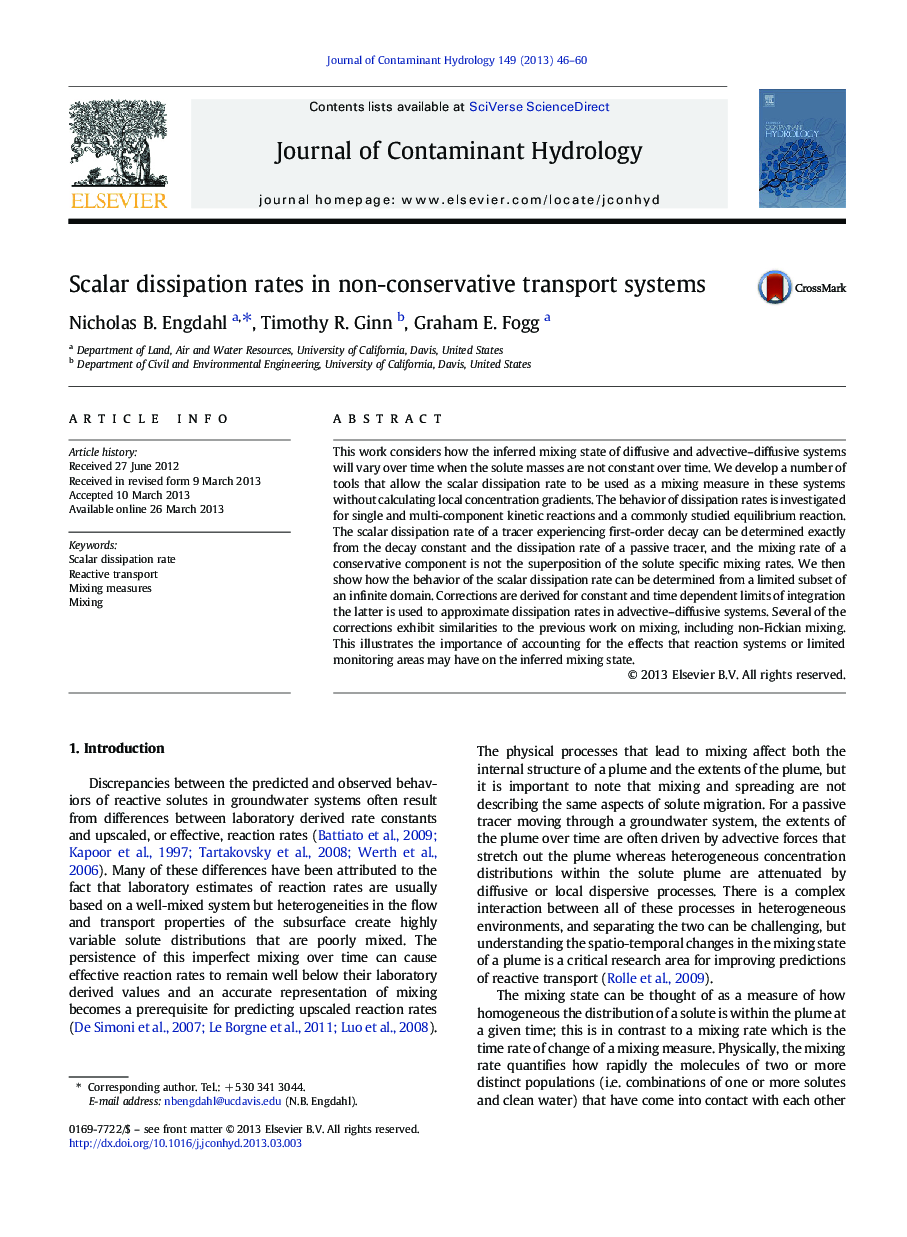| Article ID | Journal | Published Year | Pages | File Type |
|---|---|---|---|---|
| 4546686 | Journal of Contaminant Hydrology | 2013 | 15 Pages |
•Scalar dissipation rates appear different under non-conservative conditions.•The mixing state will not be inferred correctly if these effects are not considered.•Kinetic and equilibrium reactions will both affect the mixing state.•Limited monitoring of large domains also affects the behavior of mixing measures.
This work considers how the inferred mixing state of diffusive and advective–diffusive systems will vary over time when the solute masses are not constant over time. We develop a number of tools that allow the scalar dissipation rate to be used as a mixing measure in these systems without calculating local concentration gradients. The behavior of dissipation rates is investigated for single and multi-component kinetic reactions and a commonly studied equilibrium reaction. The scalar dissipation rate of a tracer experiencing first-order decay can be determined exactly from the decay constant and the dissipation rate of a passive tracer, and the mixing rate of a conservative component is not the superposition of the solute specific mixing rates. We then show how the behavior of the scalar dissipation rate can be determined from a limited subset of an infinite domain. Corrections are derived for constant and time dependent limits of integration the latter is used to approximate dissipation rates in advective–diffusive systems. Several of the corrections exhibit similarities to the previous work on mixing, including non-Fickian mixing. This illustrates the importance of accounting for the effects that reaction systems or limited monitoring areas may have on the inferred mixing state.
